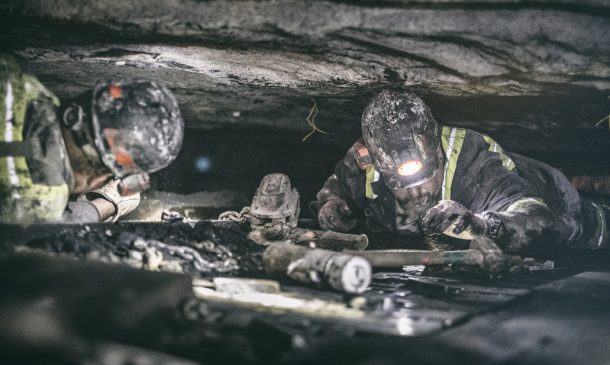A Q&A look at the Pennsylvania Coal Alliance from within, thanks to Coal Trends’ chat with
PCA director Rachel Gleason.

The Pennsylvania Coal Alliance, based in the state’s capitol city of Harrisburg, was first established in 2012; it was previously known as the Pennsylvania Coal Association. Its current chairman of the board of directors is Jimmy Brock of Core Natural Resources, and Gleason serves as the executive director. The board of directors is comprised of 27 members who represent both producer companies and manufacturer and service providers.
PCA has 153 member companies comprised of producers, manufacturers and service providers representing the Commonwealth’s bituminous coal industry.
Coal Trends: Can you tell us more about the current issues which are active efforts for your group?
Gleason: In 2019, former Governor Tom Wolf signed an executive order directing the Pennsylvania DEP to develop regulations joining Pennsylvania to the Regional Greenhouse Gas Initiative. PCA, along with the Boilermakers, IBEW and UMWA, challenged the final regulation. Pennsylvania’s Commonwealth Court ruled the final regulation was an unauthorized tax that only the General Assembly has the authority to promulgate. Current Governor Shapiro appealed the Court’s ruling to the Pennsylvania Supreme Court, where the case in pending.
Governor Shapiro has, in consecutive legislative sessions, has proposed policy initiatives developing a state CO2 trading program on fossil fuel generators, and expanding our current Alternative Energy Portfolio Standards.
Pennsylvania is the only full-time legislature in the country that is divided which makes navigating the political landscape quite challenging. Republicans control the state Senate and Democrats have a very slim majority in the state House. Pennsylvania’s Governor is Josh Shapiro, an ambitious Democrat.
What are the top worries for your membership?
Overregulation and permitting roadblocks hinder planning and delay development, including frivolous permit appeals from anti-industry advocacy groups. Foundations like Bloomberg and other World Economic Forum billionaires, and more prevalent here in PA, the Heinz Foundation, fund anti-industry and legal service nonprofits that strategically work to stop mine expansion and production.
In addition, far too often anti-industry state and federal regulations sustain litigation which threatens planning and investments.
What do you feel are among the solutions to those worries?
Less bureaucratic and politically motivated state and federal agencies.
What opportunities are the greatest for your member organizations?
Pennsylvania is home to high value thermal and premium metallurgical bituminous coals, which are valued domestically and globally in end use sectors of power generation, industrial applications and steel production. Increases in energy demand due to electrification and data centers, close proximity to the largest coke manufacturing in the United States, and export exclusivity at the Port of Baltimore, well position Pennsylvania produced coal in different markets.
How can the U.S. coal industry as a collective improve our view from the general public?
The pending collapse of electric grids across the country, as alerted by FERC, NERC, PJM and other grids, makes a good case for coal production and generation which is the most reliable and resilient source of electricity generation in America. Ratepayers are starting to see pain in paying their electric bills, which is a direct result of the premature retirement of dispatchable baseload coal generation and grids that are becoming less and less diverse.
As global conflicts continue and tensions rise, the need for domestic steel production and henceforth manufacturing needs to be emphasized as it is needed for economic development, defense and national security.
Politically, what would you ideally like to see happen to improve the industry for you?
EPA should quickly repeal the so-called endangerment finding that classifies CO2 as a pollutant, the same as criteria pollutants like sulfur dioxide and mercury, which has paved the way for reckless climate regulations such as the Biden Clean Power Plant 2.0 rule, which would force the premature closure of every coal plant in America. We need clear signals from state and federal regulatory bodies to determine investment decisions in existing power plants and make investments in the power plants of the future.
What quote or statistic do you feel represents the PCA?
Quoting former Pennsylvania Senator John Heinz, which is ironic given his legacy now funds anti-fossil fuel interests, “America’s economic strength resides in its basic industries. Turning raw materials into products of value is the way that wealth is created. A great nation must have industries, rolling stock, and reliable sources of energy. We cannot have true national security if all our steel, our fuel, and our raw materials are produced somewhere else.”
PCA holds its annual membership meeting in June; its Black Diamond Classic and Awards Dinner is held in September.

More about Pennsylvania Coal
- Pennsylvania is home to the largest underground mining complex in North America.
- Pennsylvania is home to the largest coke making facility in North America.
- Pennsylvania is the only state that mines anthracite coal.
- In July of 2024 the Pennsylvania Coal Alliance and several of its members testified at a Pennsylvania House Policy Committee hearing 1100’ underground at Core Natural Resources’ (formerly CONSOL) Havey Mine. (https://pacoal.org/pa-coal-alliance-and-members-participated-in-first-ever- underground-coal-mine-policy-hearing/)
- Per an Economic Impact Report from June 2024, Pennsylvania’s coal industry is responsible for approximately 11,547 full-time jobs, about 5,164 of these directly in the coal mining industry. “For each direct job in the coal mining industry, an additional 1.24 jobs are generated throughout the state, for a total employment multiplier of 2.24. Approximately $3.8 billion in economic output is created in Pennsylvania, $2.2 billion of this directly by the coal mining industry.”
